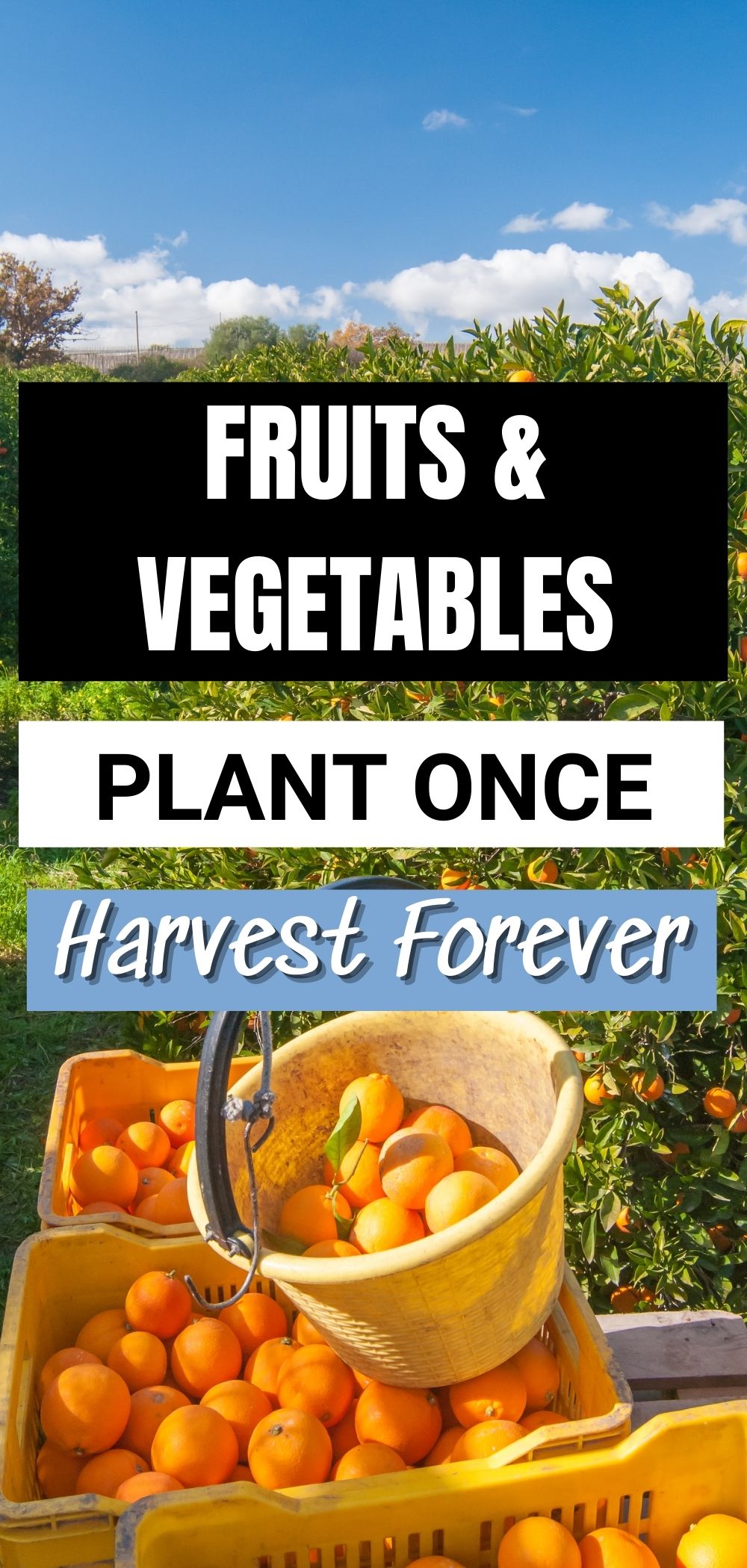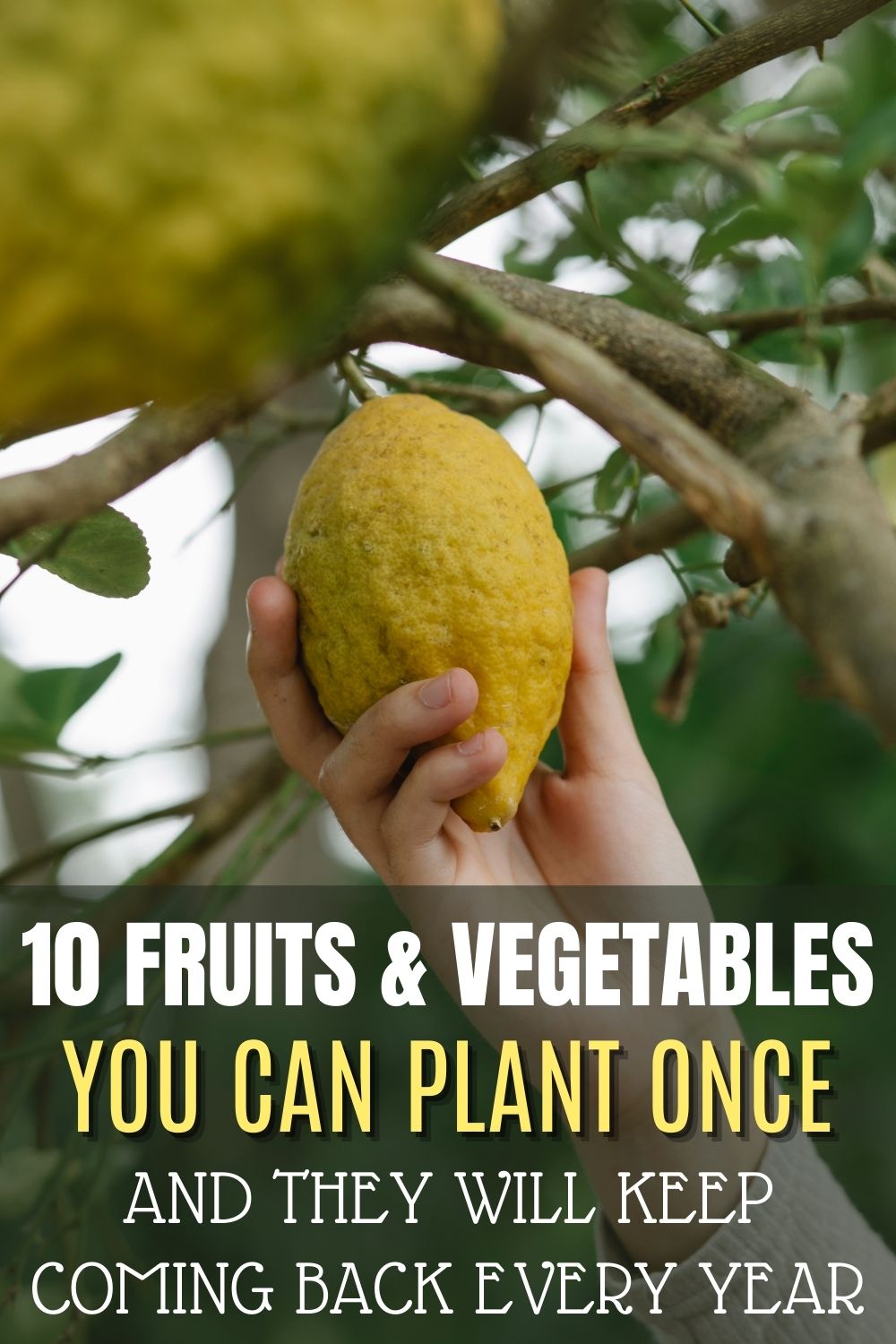GENERAL GARDENING
10 Fruits & Vegetables You Can Plant Once — And They Will Keep Coming Back Every Year
 People usually grow annual plants. These plants die each winter and they have to be replanted in spring. But, perennials keep come back every year. In this article we have listed the most delicious perennial plants to grow in your own garden:
People usually grow annual plants. These plants die each winter and they have to be replanted in spring. But, perennials keep come back every year. In this article we have listed the most delicious perennial plants to grow in your own garden:
However, even though all of these are perennials, not all of them grow perennially in all locations. This depends on the area where you live. Always check for the compatibility with the place where you live before you do the purchase.
1. Lemon
Lemon and other citrus trees grow well in tropical and subtropical areas. Sweet citruses require warmer climate, but sour citrus trees like lemon do not need high temperatures, meaning you can grow them even in cool coastal regions.
Plant your lemon tree in spring. Spring planting enables the tree to establish itself before winter comes and potentially affects tree’s growth. Keep the lemon tree in a place exposed to sun that drains well. Fertilize it every month from spring to summer during the first year using a citrus tree fertilizer that is enriched with nitrogen.
2. Onion and Garlic
Onions and garlic survive even in cold winters. Plant garlic and onion cloves in fall and enjoy watching how the green shoots poke out of the soil in spring. Leave a few of these each year. They will flower, seed themselves and separate their own bulbs. This will provide the next year’s crop.
3. Avocado
Avocado tree is native to humid and semi humid tropical areas. It grows best in places with moderately warm temperatures (60-85F) and moderate humidity.
Once it grows strong, the tree can tolerate temperatures to about 32-28F with minimal damages. If you decide to purchase a tree, you can expect your first fruit 3-4 years after you plant the tree. If you grow avocado tree from a seed, it may take from 5 to 13 years before your tree can give fruits.
Avocado trees give fruits for many years. The original Hass tree (1926) is still growing and producing fruits. Some wild trees in Mexico are older than 400 years and they still give fruits.
An avocado tree can give about 200 fruits once it is 5 years old. But, the tree will not give the same amount of fruits every year — one year it may give a larger crop, and the next year you may get a lot smaller crop.
4. Radicchio
Radicchio, or red chicory, gives a beautiful color to your home garden. It also brightens your dish. It is commonly used in Italy. Radicchio grows well in cooler seasons — spring and fall. Plant some radicchio in early spring, once the soil can be works.
If you decide for a fall crop, tuck the plant into the soil in midsummer in some colder zones and early fall in areas with milder winters. Red chicory grows best in areas exposed to full sun during cooled weather. In summer days, the plant benefits from the afternoon shade. Well established plants can handle frost.
5. Strawberries
The best strawberries come from the home garden, because ripe fruits have a rich and aromatic flavor unlike strawberries sold in supermarkets, because they are picked unripe.
Strawberries die in winter and start growing in spring. After giving the first fruits (the earliest strawberries grow in February in Florida, and the latest in June, in the North), some types produce many runners with baby plants at the tips. The runners usually root themselves nearby, and remain attached to the mother plant. You will get more fruits if you clip off some of the runners.
6. Artichoke
Globe Artichoke is a heirloom perennial veggie. It is grown for its tender and edible flower buds. Artichoke can spread up to 6 feet across. It can grow everywhere in the US, except for the southern states, including Florida and Texas, where summer days are too hot. Artichoke grows well in places where summers are cool and moist and winters are mild.
If the climate where you live is colder than Zone 8, you may want to start new plants every year. In areas with mild winders artichokes grow as perennials.
7. Fennel
Same as celery, this perennial plant gives aromatic seeds and thick bulbs. Use the seeds to season your dishes and eat the bulb as a vegetable. Fennel bulb is a common ingredient in Mediterranean dishes. You can add raw fennel bulbs to salads, or just grill and roast them.
Fennel survives winter conditions between growing zones 5 and 10. If you need the bulb, always plant the Florence fennel.
8. Asparagus
Asparagus shoots are the first signs of spring. They poke out of the soil alonside other perennial plants like tulips and crocus.
Asparagus is a perennial, meaning the same plant can grow in your garden every year. In the first year you should not harvest any asparagus at all, and each year you will have to leave many asparagus shoots behind, allowing them to flower and grow into next year’s harvest. The plants will grow for many years, sometimes even 30.
Asparagus grows great in all areas, except for the warmest parts, Zones 8 and higher. Warmer zones have milder winters, and in these areas the plants do not go fully dormant. The plants do not get enough strength and eventually decline.
9. Sweet Potatoes
These grow so easily, that if you accidentally drop a plant on the ground it will take off and grow. Of course, only if the ground is warm and moist. Plant your sweet potatoes 12-18 inches apart. Allow about 3 feet between the rows so the vines have enough space.
10. Rhubarb
You will see rhubarb stems in early spring. The tart and colorful stems are commonly added in pies and jams, sweetened with sugar or even teamed with sweat strawberries.
Plant’s leaves are rich in oxalic acid and you should not eat them. Harvest the stems, remove the leaves and add these to the compost pile.
This plant grows best in zones where the ground usually freezes in winter. Rhubarb requires extended chilling periods, and the temperatures should be below 40 degrees. It can grow as far south as Zone 7.

If you want to find more natural remedies, take a look at the Everyday Root Book!
With 350+ pages, you will be able to replace all of the toxic products and medications in your home with healthier, all-natural alternatives.
You will be confident in knowing exactly what is in the products your family uses and happy with the money you will save every month.
In addition, they offer you three more bonuses + 75% discount only this month!
GET THE EVERYDAY ROOTS BOOK NOW!
Included in this life changing book are:
- 105+ NATURAL HOME REMEDIES – Treat almost any illness with natural ingredients you probably already have in your kitchen.
- 75+ NATURAL BEAUTY RECIPES -Get the best hair and skin you’ve ever had and look younger with these insanely clever natural beauty recipes.
- 35+ DYI HOUSEHOLD PRODUCTS & CLEANERS – Never Buy Toxic Cleaning products again! Save a fortune and your families health with these super simple homemade cleaning products that work better than the chemical ones.


